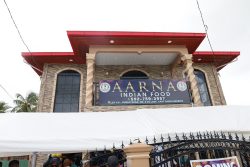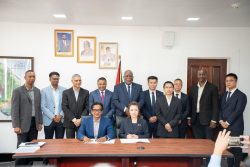 Role of official external financing
Role of official external financing
As a rule, small relatively poor open economies that are highly dependent on the production and export sale of low-value added primary products and/or other natural resources-based products that are not presently enjoying a secular boom in world commodities markets, end up in a situation where debt-led and capital inflows-led processes become the key drivers of economic growth. Guyana and most of the wider Caricom represent classic examples of these processes at work. However, to be in a position to cope with exogenous external economic shocks, the authorities in such countries are constrained to rely on official external financing as both a lender of first and last resort. This is needed to provide cover against the pitfalls of debt and capital inflows-led growth.
The IMF fully recognizes this to be the case. Consequently, as a general rule it seeks accommodation from its rich members in order to put safeguard measures in place as and when such eventualities arise. The pressure to secure external financing from private sources at times of crisis is immense and the IMF is compelled to fill this void. Thus, as the ongoing global financial crisis and economic recession grew in 2009, the IMF sought to strengthen the international reserves of member countries. In this regard there was first a general allocation of Special Drawing Rights (SDRs) to the tune of US$250 billion last August. A month later (September, 2009) this was added to by way of a special allocation of SDRs to the tune of US$33 billion.
It was from this expansion of SDRs that all Caricom countries benefited to the amount of US$947 million in 2009, as I reported in last Sunday’s column. The only Caricom country which was excluded from this was Trinidad and Tobago. This was mainly due to a strong external position arising from its export concentration on oil, energy and energy-related products. As I indicated in last week’s column, Jamaica was the largest recipient of SDRs in the region (US$336 million). However, both the Bahamas (US$174 million) and Suriname (US$123 million) received more than Guyana (US$110 million). But, as a percentage of GDP, Guyana’s sum represented 9 per cent, while for the other three mentioned it represented 3 per cent, 2 per cent and 6 per cent, respectively.
This IMF support to the region did not end here. Grenada, St Lucia, St Vincent and the Grenadines, as well as Jamaica got further support to mitigate the effects of the global crisis. Further, since earlier this year Antigua and Barbuda and Jamaica started negotiations with the IMF for official funds to meet their financing needs occasioned by the crisis. Of special note, the IADB also gave assistance to both Jamaica (to the tune of US$300 million) and Grenada. The latter received US$7 million to add to its Poverty Reduction and Growth Facility, which it had previously arranged with the IMF more than a decade ago (1996).
I do not at this stage intend to discuss the topics of financial contagion and meltdown in the Caricom region as a consequence of the global financial crisis and credit crunch, in particular the collapse of the CL Financial Group (Trinidad and Tobago) and the Stanford Group (based in Antigua). These will be addressed later. However, it is important to note at this juncture because of the recent court decision to wind-up Clico (Guyana) that the Caricom Petroleum Fund has also disbursed support within the region from which Guyana received the sum of US$15 million to assist with claims from policyholders.
The balance of payments
In order to trace capital inflows during the ongoing global economic crisis it would be useful to examine some of the key features of Guyana’s balance of payments. It is important, however, for readers to be aware at the outset what the balance of external payments of a country represents. When properly executed, the balance of payments is supposed to portray in an analytically comprehensible way, an accurate statement of the debits and credits, payments and receipts involved in Guyana’s external transactions with the rest of the world, including both countries and international organizations. Since debits and credits, payments and receipts are the opposite sides of given transactions, the balance of payments must, by definition, always balance.
This is also termed ‘double-entry’ book-keeping. However, where data on these transactions are not only poor, but very uneven in quality, as with Guyana, the authorities resort to this definitional identity in order to ‘guesstimate’ the movement in the less reliable categories of the required data.
Typically as in Guyana, the merchandise trade data are far more reliable than the data related to ‘services,’ ‘transfers’ or ‘capital’ and ‘financial transactions’ on the balance of payments. The authorities, however, know that for the balance of payments to balance any surplus or deficit on let us say, the current account, must be matched by an equal and opposite movement on the capital and/or financing account. Indeed there is also an ‘errors and omissions’ category to cover for any residual discrepancy, which cannot be accounted for in the preparation of the balance of payments statement.
A few examples might help to clarify this point. First, the data on services in Guyana are sketchy and are reported on a net basis; that is, after payments for services received are subtracted from receipts from services sold. Since Guyana is not a services exporting economy, this figure is usually a negative value (minus).
Second, the data on remittances flows in and out of Guyana are largely estimated from transactions made through the banks and money transfer firms. But as we all know, remittances do not always go through formal financial institutions. Almost all Guyanese have, at one time or another, received cash remittances brought in directly by visiting family and friends, or in-kind remittances (barrels!) with no certain valuation.
Thirdly, the errors and omissions category as indicated above is a catch-all for errors of accounting. More pertinently, there is no direct, regular, independent measurement of the movement of items such as capital flight and money laundering, both of which are illegal. These categories of external transactions undertaken by residents of Guyana make for definite errors in balance of payments statements.
Next week I shall continue from this point, beginning with a brief look at the actual balance of payments and debt data for Guyana as presented in the 2010 National Budget and Estimates.









